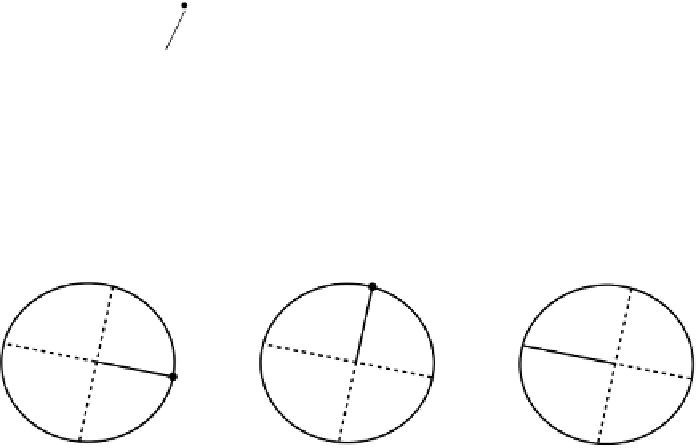Geoscience Reference
In-Depth Information
Vernal equinox
March 20
(a) THE ORBITAL CALENDAR
(b) Precession of the Earth
axis
Summer
solstice
June 21
focii
1.47
.
10
8
km
Aphelion
July 4
Perihelion
Jan. 3
1.52
.
10
8
km
SUN
Winter
solstice
Dec. 21
center
of ellipse
*
The magnitude of axial tilt has also varied between
22
°
to 24.5
°
over the past 250 ky
Autumnal equinox
Sept. 22
(c) Precession of the equinoxes
March 20
Sept. 22
Dec. 21
TODAY
5.5 KA
11 KA
March 20
Dec. 21
June 21
SUN
Dec. 21
June 21
Sept. 22
Sept. 22
June 21
March 20
NOW
(d)
5
past
future
eccentricity
3
+
1
precession
-
24.0
23.5
23.0
22.5
tilt
-250
-200
-150
-100
-50
0
+50
+100
ky BP
ky AP
Fig. 6.12
(a), (b), and (c) are the various Milankovich mechanisms for long-term global climate change; (d) Computed changes in eccentricity,
tilt, and precession for the past 0.25 my and for the future 0.1 my.
circular, a fact known since the work of Kepler in the sev-
enteenth century. The very nature of an elliptical path,
with the radiating Sun at one focus, means that there are
seasonal variations in the amount of radiation received by
Earth at aphelion and perihelion. This is based on the
premise that the intensity of solar radiation is reduced with
distance from the Sun. At present, Earth is nearest the
Sun, by about 4.6
10
6
km, on 2-3 January and furthest























































Search WWH ::

Custom Search